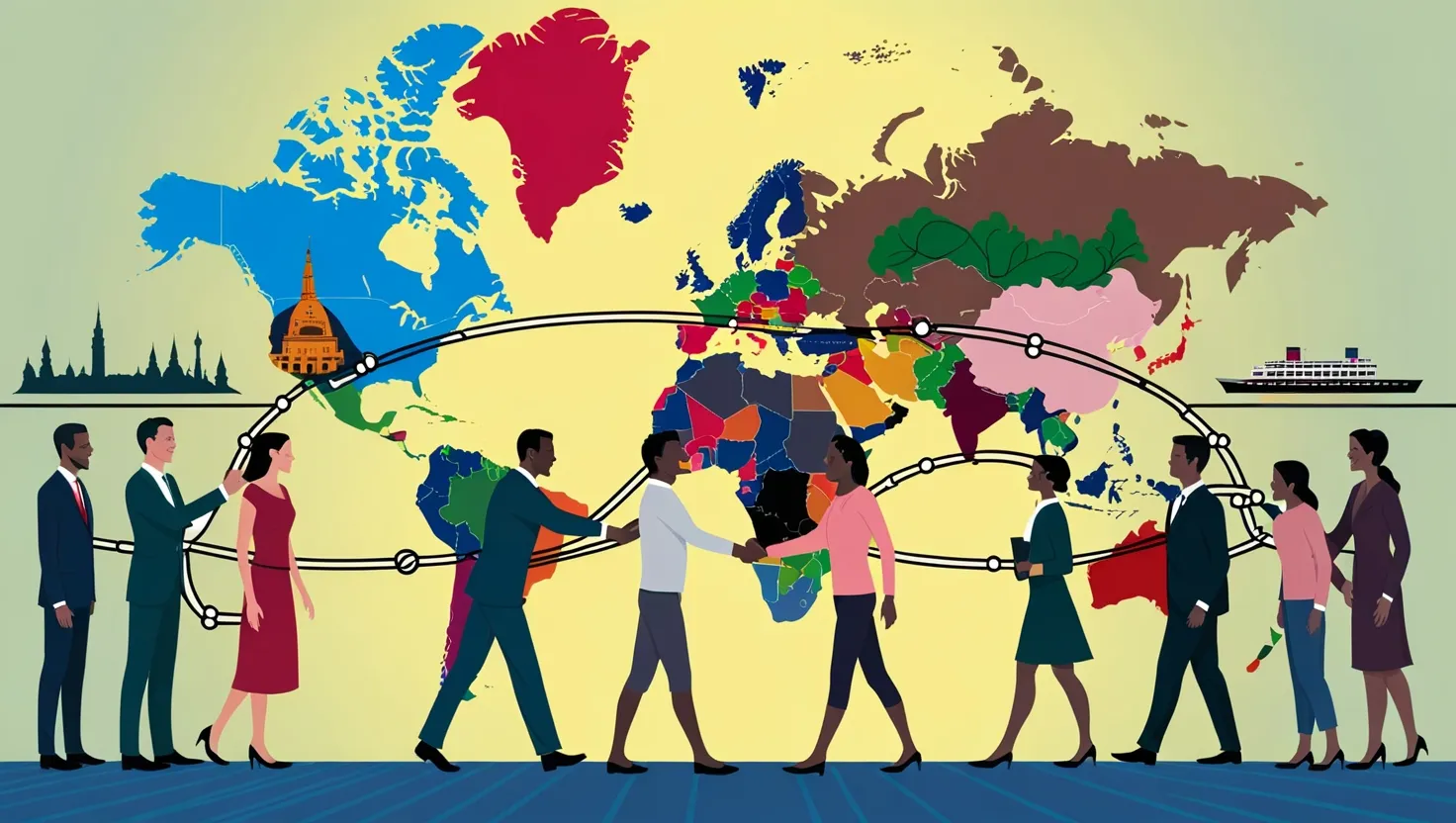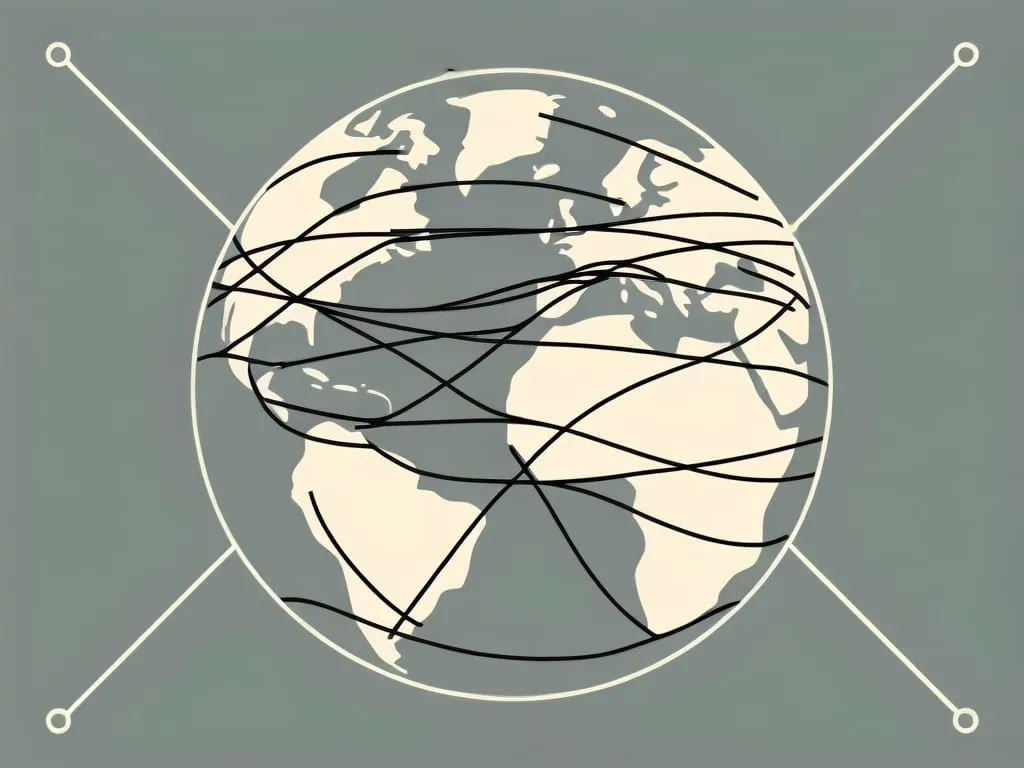In the intricate web of global commerce, trade agreements are the threads that weave together economies, fostering growth, competition, and cooperation. Here, we delve into five pivotal trade agreements that are reshaping the international trade landscape: the Regional Comprehensive Economic Partnership (RCEP), the United States-Mexico-Canada Agreement (USMCA), the African Continental Free Trade Area (AfCFTA), the EU-Japan Economic Partnership Agreement, and the Comprehensive and Progressive Agreement for Trans-Pacific Partnership (CPTPP).
The Rise of RCEP: A New Asian Powerhouse
Imagine a trade bloc that encompasses nearly a third of the world’s population and GDP. This is what the Regional Comprehensive Economic Partnership (RCEP) achieves, bringing together 15 countries including China, Japan, South Korea, and the ASEAN nations. RCEP is more than just a trade agreement; it’s a strategic move to solidify Asia’s position as a global economic powerhouse.
By reducing tariffs and simplifying trade procedures, RCEP makes it easier for businesses to operate across borders. This agreement is particularly significant for smaller economies within the bloc, as it provides them with greater access to larger markets. For instance, Vietnam and Indonesia can now export goods to China and Japan with reduced barriers, boosting their economic growth.
USMCA: A New Era for North American Trade
The United States-Mexico-Canada Agreement (USMCA) is often seen as a successor to NAFTA, but it brings several new dimensions to the table. One of the most notable aspects of USMCA is its focus on modernizing trade rules to include digital commerce and intellectual property rights. This is crucial in today’s digital age, where online transactions are becoming the norm.
USMCA also introduces stricter environmental and labor standards, which can have a profound impact on how businesses operate. For example, the agreement includes provisions to protect the environment and ensure fair labor practices, which can lead to better working conditions and reduced environmental degradation.
AfCFTA: Africa’s Economic Renaissance
The African Continental Free Trade Area (AfCFTA) is a game-changer for the African continent. By creating a single market of 54 countries with a combined GDP of $3.4 trillion, AfCFTA aims to eliminate tariffs on 90% of goods and reduce barriers to trade in services. This ambitious project could raise incomes by 7% and reduce extreme poverty by 40 million people by 2035.
AfCFTA is not just about trade; it’s about economic integration and development. It encourages foreign direct investment, bringing in fresh capital, technology, and skills that are essential for raising living standards. The agreement also plans to harmonize policies on investment, competition, e-commerce, and intellectual property rights, making African markets more attractive and competitive.
EU-Japan Economic Partnership: A Bridge Between East and West
The EU-Japan Economic Partnership Agreement is a landmark deal that bridges two of the world’s largest economies. This agreement eliminates tariff barriers, making it easier for European and Japanese businesses to trade goods and services. The impact is significant, especially for highly developed EU countries that stand to benefit greatly from tariff reductions.
However, the agreement also highlights the disparities within the EU. Less developed member states may face challenges due to lower competitiveness, underscoring the need for targeted support and development programs. Despite these challenges, the agreement fosters greater economic cooperation between Europe and Japan, enhancing their global economic influence.
CPTPP: The Pacific’s Progressive Trade Bloc
The Comprehensive and Progressive Agreement for Trans-Pacific Partnership (CPTPP) is often seen as a beacon of progressive trade policies. Originally conceived as the Trans-Pacific Partnership (TPP), CPTPP was revamped after the U.S. withdrawal and now includes 11 countries around the Pacific Rim.
CPTPP is notable for its comprehensive approach to trade, covering not just goods and services but also digital commerce, intellectual property, and environmental standards. It sets high standards for labor rights, environmental protection, and regulatory transparency, making it a model for future trade agreements.
Market Access and Tariff Reductions
One of the primary benefits of these trade agreements is the significant reduction in tariffs and other trade barriers. For instance, RCEP and CPTPP aim to eliminate tariffs on a wide range of goods, making it cheaper for businesses to import and export. This not only reduces costs but also increases the variety of goods available to consumers.
Market access is another critical aspect. Agreements like USMCA and AfCFTA open up new markets for businesses, allowing them to reach a broader audience. This increased market access can lead to higher demand, more production, and ultimately, job creation.
Regulatory Harmonization
Regulatory harmonization is a key feature of these agreements. By aligning regulations across member countries, businesses face fewer hurdles when operating internationally. For example, the EU-Japan Economic Partnership Agreement simplifies regulatory procedures, making it easier for companies to comply with standards in both Europe and Japan.
This harmonization extends to digital commerce as well. Agreements like CPTPP and USMCA include provisions to facilitate cross-border data flows and protect digital rights, which is essential in the digital age.
Geopolitical Implications
These trade agreements have significant geopolitical implications. RCEP, for instance, solidifies China’s economic influence in Asia, while the USMCA reinforces the economic ties between the U.S., Mexico, and Canada. The AfCFTA is a bold step towards African economic integration, potentially reducing the continent’s dependence on external powers.
The EU-Japan Economic Partnership Agreement strengthens the economic bond between Europe and Japan, creating a powerful alliance that can counterbalance other global economic forces. CPTPP, with its progressive trade policies, sets a new standard for international trade, influencing how future agreements are structured.
Addressing Modern Trade Issues
Modern trade issues such as digital commerce, intellectual property rights, and environmental standards are at the forefront of these agreements. USMCA and CPTPP include robust provisions for digital commerce, ensuring that online transactions are secure and regulated.
Intellectual property rights are another area of focus. Agreements like the EU-Japan Economic Partnership and CPTPP provide strong protections for intellectual property, encouraging innovation and investment.
Environmental standards are also a priority. USMCA and CPTPP include stringent environmental provisions, ensuring that trade does not come at the expense of environmental degradation. This is a significant shift from traditional trade agreements, which often overlooked environmental concerns.
The Future of Global Trade
As these trade agreements continue to shape the global trade landscape, they bring both opportunities and challenges. For member countries, the benefits are clear: increased market access, reduced tariffs, and regulatory harmonization. However, non-member countries may face new challenges, such as increased competition and potential trade diversion.
The geopolitical implications are also profound. These agreements are not just economic tools but also strategic instruments that can influence global power dynamics. As the world becomes more interconnected, the importance of these trade agreements will only grow.
In conclusion, these five global trade agreements are not just legal documents; they are catalysts for economic growth, innovation, and cooperation. They reflect a new era in international trade, one that is more inclusive, progressive, and environmentally conscious. As we move forward, it will be fascinating to see how these agreements continue to reshape the world of global commerce.






